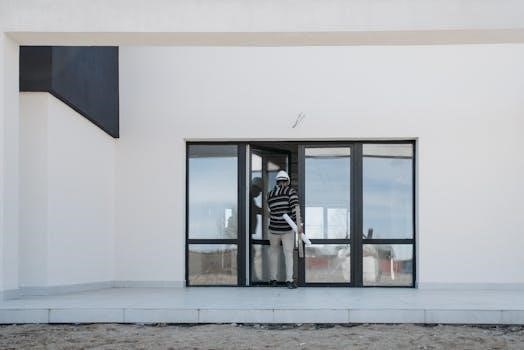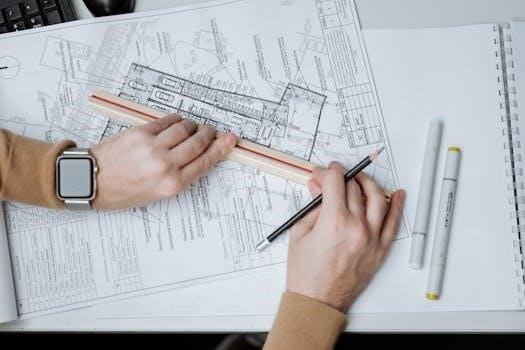
Understanding Outdoor Kitchen Basics
Outdoor kitchens are fantastic for enjoying the outdoors and entertaining. A basic setup, often called a satellite kitchen, relies on the indoor kitchen. Essential components include cooking appliances, prep space, a sink, and placement near the indoor kitchen for convenience.
Defining a Satellite Outdoor Kitchen
A satellite outdoor kitchen is essentially a simplified extension of your indoor culinary space, designed to provide basic cooking functionality in your outdoor area. It’s characterized by its dependence on the main indoor kitchen for certain resources and support. Unlike a fully independent outdoor kitchen, a satellite version typically focuses on core cooking needs. This often includes a grill, some prep area, and potentially a sink. Its primary purpose is to allow for cooking and preparing meals in an outdoor setting, while still leveraging the resources of the indoor kitchen. Positioning it near the indoor kitchen is crucial for easy access to utensils, ingredients, and indoor utilities. The focus is on functionality and convenience, rather than a comprehensive outdoor culinary experience. The satellite model is a great choice for those who want to enjoy outdoor cooking without the complexity of a complete outdoor kitchen setup. It’s also a good starting point for those new to the idea of an outdoor cooking space.
Essential Components of an Outdoor Kitchen
An outdoor kitchen, whether basic or elaborate, requires several key components to function effectively. At the heart of any outdoor kitchen is a cooking appliance, typically a grill, which can range from a simple charcoal grill to high-performance gas grills or even specialized options like Argentinian-style grills or pizza ovens. Adequate prep and landing space is another crucial element, offering room to chop vegetables, season meats, and assemble dishes. A sink is also highly beneficial, allowing for easy cleanup and hand washing, though it is not always a must-have for basic setups. Storage solutions, such as cabinets or drawers, are valuable for keeping utensils, cookware, and other supplies organized and accessible. Additionally, consider the need for power outlets for appliances and lighting, especially if the kitchen is used after dark. Finally, comfortable seating and dining areas are important to complete the outdoor cooking and entertaining experience. These components come together to make a functional and enjoyable outdoor kitchen space.

Planning Your Outdoor Kitchen
Careful planning is essential for your outdoor kitchen. Consider location, size, and design to maximize enjoyment. A well-thought-out plan ensures functionality and aesthetic appeal for your outdoor cooking area.
Determining the Kitchen Location and Size
When planning your outdoor kitchen, selecting the right location and size are crucial first steps. The placement should consider proximity to your indoor kitchen for easy access to utilities and supplies. Think about the flow of traffic in your backyard and position your outdoor kitchen to complement the existing space. Measure the area carefully, taking into account the cooking appliances, prep surfaces, and seating you want to include. It’s essential to have enough space for both cooking and entertaining guests. If your backyard is limited, explore small outdoor kitchen ideas that maximize functionality without compromising on design. Remember to account for clearances around grills and other hot zones. It is important to allow for adequate room to move around while cooking, and also to provide a relaxing space for guests to gather. Consider the sun’s path, and provide shade if necessary. Also, consider how the kitchen will fit into your overall yard layout for a cohesive look. Proper planning will ensure a functional and enjoyable outdoor cooking space.
The Importance of the Design Process
The design process is paramount when building an outdoor kitchen. It’s not just about aesthetics; it’s about creating a functional space that suits your specific needs and preferences. Take your time, carefully considering what you want to achieve with your outdoor kitchen. Before starting any construction, analyze your space, consider the layout, and determine the necessary appliances and features. A well-thought-out design will optimize workflow and improve the overall cooking experience. Consider factors like material choices, counter space, storage, and the flow of traffic. It’s essential to visualize the kitchen in your space, perhaps using 3-D models or sketches, to ensure the design meets your expectations. Good planning is the key to getting the most out of your outdoor kitchen build. Rushing the design stage may lead to costly mistakes and a less-than-ideal result. Therefore, invest time in planning to create a kitchen that is both beautiful and practical. The design process is as much about performance as it is about style and aesthetics.

DIY Outdoor Kitchen Options
DIY outdoor kitchens are popular, allowing homeowners to create custom spaces. Free plans and ideas are available online, with options ranging from simple grilling stations to fully equipped setups. Building your own can be rewarding.
Free DIY Outdoor Kitchen Plans and Ideas
Numerous resources offer free DIY outdoor kitchen plans and ideas, perfect for those looking to build on a budget. These plans range from basic grilling stations to more elaborate setups, often including detailed instructions, visual guides, and downloadable PDF blueprints. Some plans utilize readily available materials, making the projects cost-effective. You can find inspiration from various online sources, including home improvement websites and DIY blogs. These free plans cater to different skill levels, allowing both beginners and experienced builders to create functional and attractive outdoor cooking spaces. It is important to carefully review the provided plans and adapt them to your specific needs and space constraints. Remember that these free plans are a starting point and can be customized to fit your unique style and requirements. Consider the size of your backyard, the materials you prefer, and the features you want, such as a pizza oven, a grill, or storage cabinets when selecting your plan. Many of these plans are available in PDF format, making them easy to download and print.

Creating Your Own Outdoor Kitchen Plans
Embarking on the journey of creating your own outdoor kitchen plans can be a rewarding but challenging task. It requires technical knowledge, careful planning, and attention to detail. While it allows for complete customization, it may not be suitable for everyone, especially those without prior experience in design or construction. You’ll need to consider factors such as appliance openings, utility hookups, and the overall layout to ensure a functional and safe space. Start by measuring your space and determining the desired size of your outdoor kitchen. Think about the materials you want to use, the appliances you need, and the style you want to achieve. Consider consulting with professionals or using specialized software to create accurate and detailed plans. Pay attention to the necessary clearances for appliances and ensure that your design meets building codes and safety standards. While it’s tempting to jump into the build, remember that careful planning is crucial for a successful outcome. This process will allow you to tailor the kitchen to your specific needs and preferences, resulting in a unique and customized outdoor cooking area.

Outdoor Kitchen Design Elements
Key elements include understanding hot zones, like grills and cooktops. Common configurations are straight, L-shaped, and U-shaped designs. Thoughtful planning ensures an outdoor kitchen that is both functional and aesthetically pleasing.
Consideration of Hot Zones
When designing an outdoor kitchen, a crucial aspect is the strategic consideration of “hot zones.” These areas primarily involve the placement of cooking appliances such as grills, cooktops, and pizza ovens. Proper planning of these zones is paramount for both safety and functionality. It’s essential to allocate sufficient space around these hot elements to prevent accidental burns and ensure comfortable maneuvering while cooking. Moreover, material selection near hot zones is critical; opting for heat-resistant surfaces like concrete or stone helps avoid fire hazards and structural damage. Ventilation is another key factor. Ensuring adequate airflow around grills and cooktops will reduce smoke buildup and maintain a pleasant environment. The layout of the hot zones should align with the workflow of cooking, allowing easy access to prep areas and serving spaces. Careful consideration of the sun’s path and wind direction can further enhance the cooking experience, making the hot zone safer and more enjoyable. Ultimately, mindful planning of hot zones is vital for a successful and well-functioning outdoor kitchen.
Common Outdoor Kitchen Configurations
Outdoor kitchens typically adopt a few common configurations to maximize functionality and aesthetics. The straight layout, a simple and space-efficient design, places all components along a single line, ideal for smaller areas. The L-shaped configuration offers enhanced workflow by positioning cooking and prep areas at a right angle, creating a more defined workspace. This is a popular choice as it integrates well with corners. The U-shaped layout is the most spacious, encompassing three sides to create a fully functional cooking zone that is excellent for larger outdoor spaces and for multiple cooks. Beyond these, variations include island designs that float in the center of a patio. These layouts impact accessibility, traffic flow, and the overall visual appeal of the outdoor space. When choosing a configuration, it’s important to consider available space, cooking needs, and the desired entertainment style. Each configuration should be adapted to specific needs to ensure optimal functionality and a visually appealing layout.